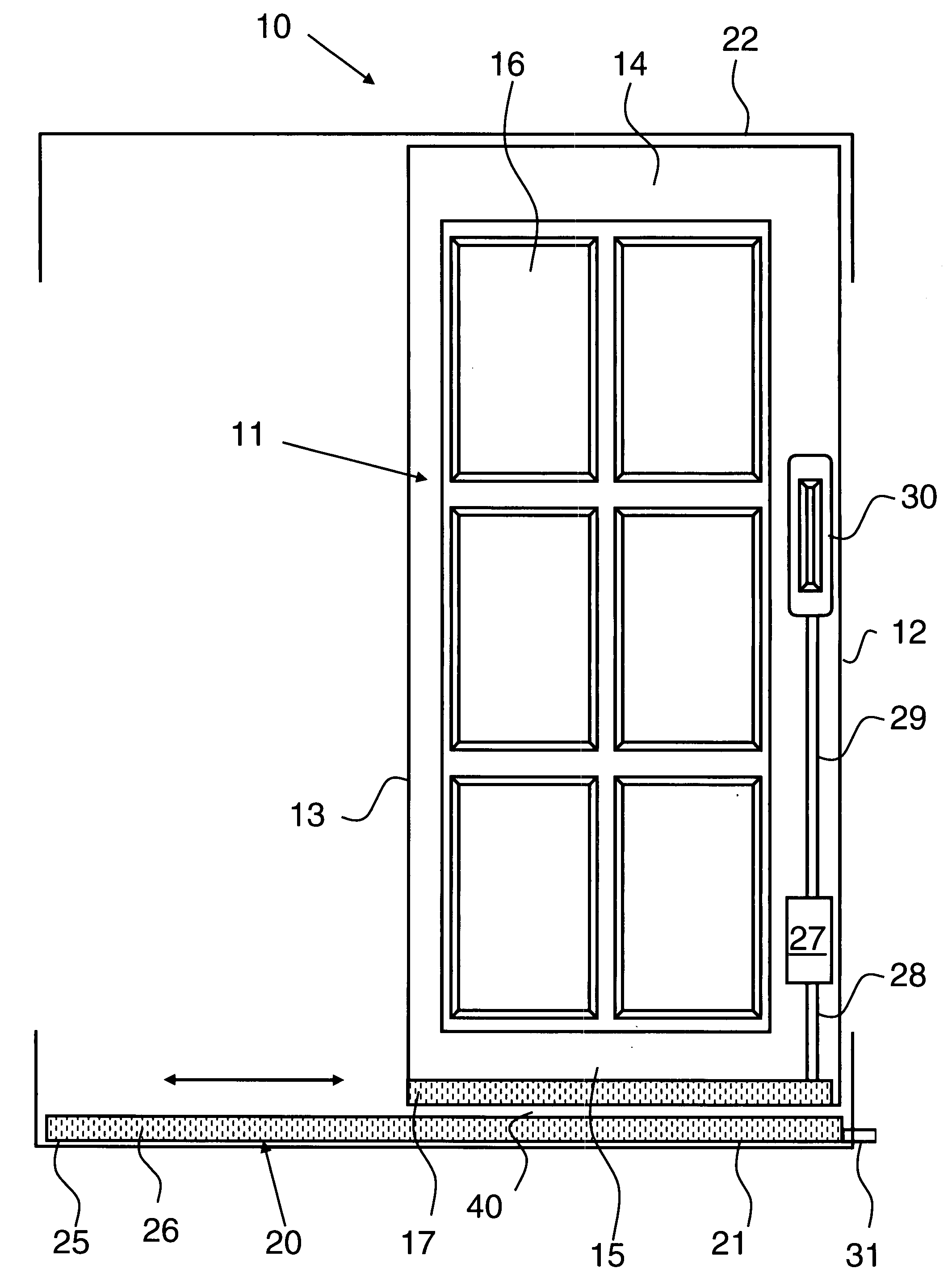Magnetically supported sliding track system
a sliding track and magnetic technology, applied in the direction of door/window protective devices, door/window fittings, constructions, etc., can solve the problems of not being supported, not well constrained, and subject to front to back movement, so as to prevent intruder entry, reduce sliding friction, and high friction level
- Summary
- Abstract
- Description
- Claims
- Application Information
AI Technical Summary
Benefits of technology
Problems solved by technology
Method used
Image
Examples
Embodiment Construction
[0028]Assemblies for sliding doors and windows are currently constructed using a track and rail arrangement. The rail mates with a groove located within the bottom of a frame and the bottom of a sliding door / window, respectively, and / or visa versa. These currently utilized sliding track rail-groove assemblies require continuous maintenance as they are highly susceptible to corrosion from weather and blockage from dirt and debris. Corrosion and blockage causes damage to the track assembly, causing the mating rail and groove to become disengaged thereby making it difficult, if not impossible, to slide the door or window to the desired position. As a result, these sliding track assemblies and / or doors and windows typically need repair and / or replacement on a semi-regular basis. Regular repair and replacements increase the time and expense required to maintain these doors and windows.
[0029]Generally the invention of the magnetically supported sliding track system broadly comprises: (i) ...
PUM
 Login to View More
Login to View More Abstract
Description
Claims
Application Information
 Login to View More
Login to View More - R&D
- Intellectual Property
- Life Sciences
- Materials
- Tech Scout
- Unparalleled Data Quality
- Higher Quality Content
- 60% Fewer Hallucinations
Browse by: Latest US Patents, China's latest patents, Technical Efficacy Thesaurus, Application Domain, Technology Topic, Popular Technical Reports.
© 2025 PatSnap. All rights reserved.Legal|Privacy policy|Modern Slavery Act Transparency Statement|Sitemap|About US| Contact US: help@patsnap.com



